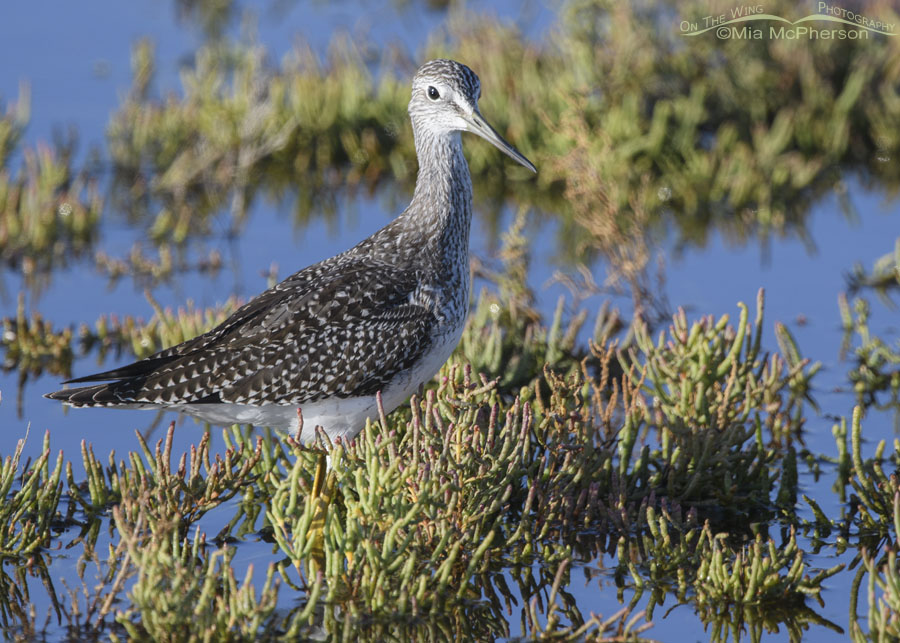 Greater Yellowlegs in pickleweed – Nikon D500, f7.1, 1/640, ISO 500, +0.3 EV, Nikkor 500mm VR with 1.4x TC, natural light
Greater Yellowlegs in pickleweed – Nikon D500, f7.1, 1/640, ISO 500, +0.3 EV, Nikkor 500mm VR with 1.4x TC, natural light
On my last trip up to Bear River MBR I had a Greater Yellowlegs land close to me in pickleweeds while I was parked on the north side of the auto tour route. The light wasn’t the best yet I liked the fact that there were pickleweeds in my images.
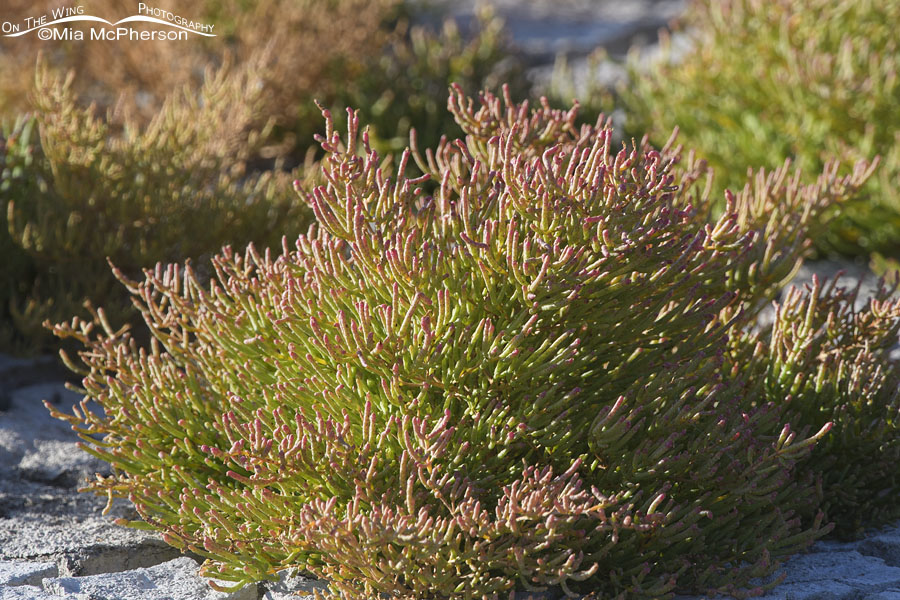 Pickleweed in morning light – Nikon D500, f7.1, 1/800, ISO 640, Nikkor 500mm VR with 1.4x TC, natural light
Pickleweed in morning light – Nikon D500, f7.1, 1/800, ISO 640, Nikkor 500mm VR with 1.4x TC, natural light
What are pickleweeds?
Pickleweeds are from the genus Salicornia. They are succulent, salt tolerant (halophytic) flowering plants. I usually see pickleweed on playas and salt flats and pans in and around the marshes that surround the Great Salt Lake. Common names for this genus include glasswort, picklegrass, samphire and pickleweed. Because it is edible it is sometimes sold in markets and restaurants as samphire greens, sea asparagus and sea beans.
I’ve never tasted it but apparently it tastes like pickles or salty potato chips. Pickles aren’t on my list of favorite foods so I have never tasted pickleweed.
I remembered that I had taken some pickleweed images a couple of years ago at the refuge. These photos were taken exactly three years ago today
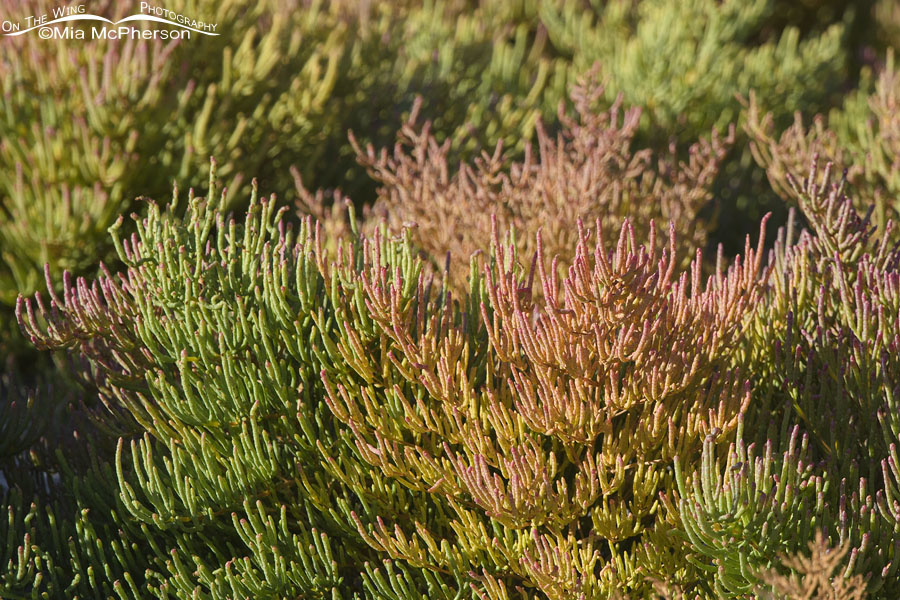 The colors of pickleweed – Nikon D500, f7.1, 1/1000, ISO 640, Nikkor 500mm VR with 1.4x TC, natural light
The colors of pickleweed – Nikon D500, f7.1, 1/1000, ISO 640, Nikkor 500mm VR with 1.4x TC, natural light
Pickleweed roots filter out some of the salt from their environment before it can move into the plant. The remaining salt is stored in balloon-like cavities in their cells called vacuoles. When its vacuole is full, a cell ruptures, and newer younger cells continue to accumulate incoming salt. That is where pickleweed gets its salty taste when eaten.
Birds eat the seeds and there are butterfly larvae that feed on the plants.
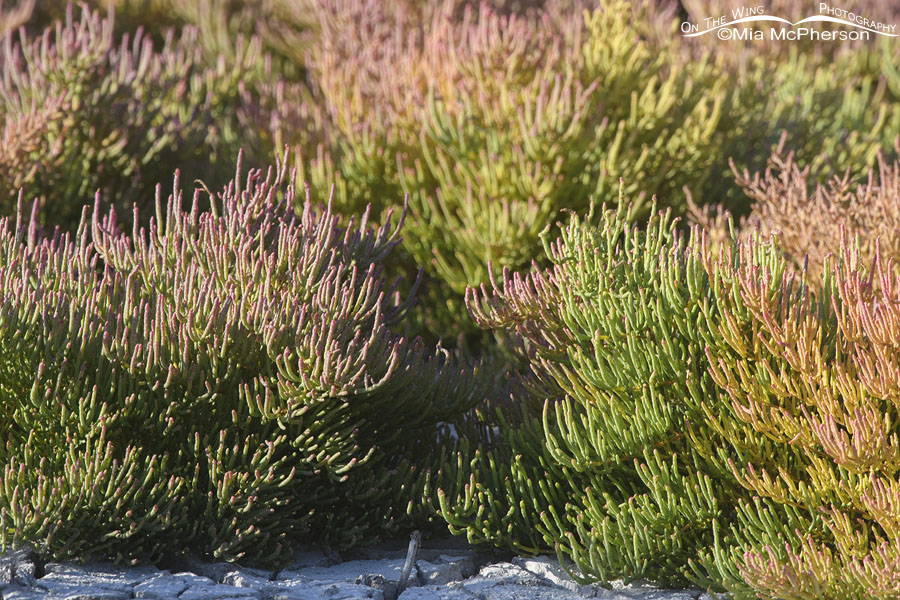 Pickleweed at Bear River MBR – Nikon D500, f7.1, 1/640, ISO 640, Nikkor 500mm VR with 1.4x TC, natural light
Pickleweed at Bear River MBR – Nikon D500, f7.1, 1/640, ISO 640, Nikkor 500mm VR with 1.4x TC, natural light
There are two kinds of native pickleweed in Utah, Salicornia rubra and Sarcocornia utahensis. I believe the pickleweeds in my photos are Sarcocornia utahensis which is also called Utah swampfire or Utah Glasswort. I like the name pickleweed and use it.
Starting after the middle of August this pickleweed starts to turn from green to yellow and orange which eventually ends up red.
Maybe one day I will taste pickleweed. I hear it is good blanched then chilled and put on salads.
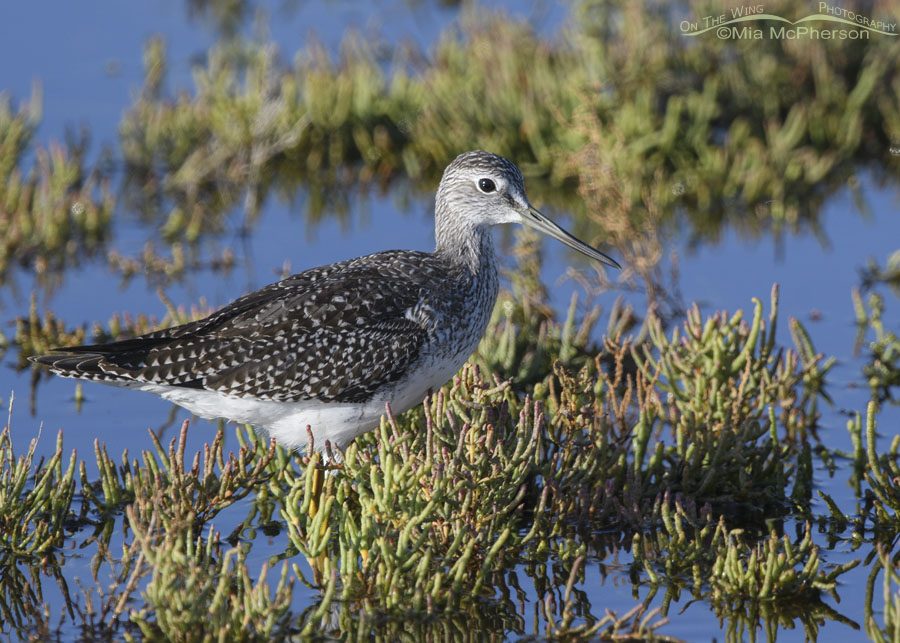 Pickleweeds and a Greater Yellowlegs – Nikon D500, f7.1, 1/640, ISO 500, +0.3 EV, Nikkor 500mm VR with 1.4x TC, natural light
Pickleweeds and a Greater Yellowlegs – Nikon D500, f7.1, 1/640, ISO 500, +0.3 EV, Nikkor 500mm VR with 1.4x TC, natural light
Any how…
I was delighted that this Greater Yellowlegs landed where there were pickleweeds so I could share the photos of the shorebird and the plants.
Life is good.
Mia
Click here to see more of my Greater Yellowlegs photos plus facts and information about this species. Click here to see more of my wildflower, shrub and tree photos.


I love the beauty and the education you share. Thank you.
The island I grew up on had something similar. It grew in all the salt flats, never knew the name or that you could eat it. Alas they have filled in all the salt flats and built condos or t-shirt shops and wonder why they have horrible flooding.
When will we every learn.
Love em, Great shots!